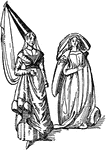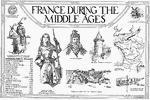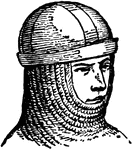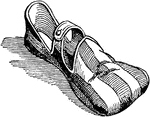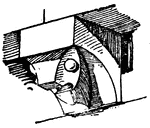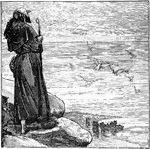
St. Columba at Oronsay
Saint Columba was an outstanding figure among the Gaelic missionary monks who, some of his advocates…

Minster Church, Isle of Sheppey
In English usage, Minster is an honorific title attached to certain major medieval churches. Most of…
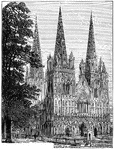
Lichfield Cathedral
Lichfield Cathedral is situated in Lichfield, Staffordshire, England. It is the only medieval English…

A Knight of St. John
It takes its origins from the Knights Hospitaller, an organization founded in Jerusalem in 1050 as an…

Simon de Montfort
Simon de Montfort, 6th Earl of Leicester (1208 – August 4, 1265), was the principal leader of…
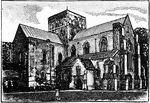
Holy Cross Church, Near Winchester
The Hospital of St. Cross is a medieval almshouse in Winchester, England, founded between 1133 and 1136…

St. Paul's Cathedral, London (Interior)
St Paul's Cathedral, is the Anglican cathedral on Ludgate Hill, in the City of London, and the seat…
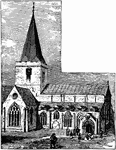
The Old Church, Perth, N.B.
During the Middle Ages, Perth's only parish church was the Burgh Kirk of St. John the Baptist. With…

Part of the Savoy Palace
The Savoy Palace was considered the grandest nobleman's residence of medieval London, until it was destroyed…
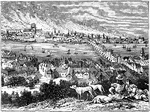
Great Fire of London
The Great Fire of London, a major conflagration that swept through the central parts of London from…
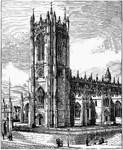
Manchester Cathedral
Manchester Cathedral is a Medieval church located on Victoria Street in central Manchester and is the…
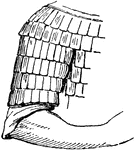
Scale Armor
Small plates are sewn onto cloth, overlapping. "Scale-armor of the Early Middle Ages." -Whitney, 1911
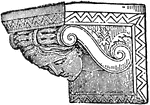
Corbel
In architecture a corbel (or console) is a piece of stone jutting out of a wall to carry any superincumbent…

Gothic Style Window
Gothic architecture is a style of architecture which flourished during the high and late medieval period.…

Dipsa
Dipsa is a tiny, extremely poisonous snake from Medieval bestiaries. They were said to be said to be…

Washington Old Hall
Willian de Wessyngton was a forebear of George Washington, the first President of the United States.…
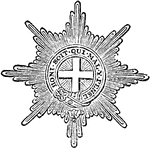
Order of the Garter Star
An illustration of the Order of the Garter Star. The Most Noble Order of the Garter is an order of chivalry,…
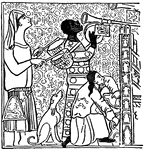
Medieval Kettledrum
An illustration of medieval kettledrums in the 14th century. Timpani (also known colloquially as kettledrums…

One Bay of Choir, Lichfield Cathedral
Lichfield Cathedral is situated in Lichfield, Staffordshire, England. It is the only medieval English…

Plan of Château de Chambord
The royal Château de Chambord at Chambord, Loir-et-Cher, France is one of the most recognizable…

Plan of Louvre and Tuileries, Paris
The palais du Louvre in Paris, on the Right Bank of the Seine is a former royal palace, situated between…

Medieval Shield
A shield of mounted men-at-arms from the first half of the 13th century, considered the High Middle…

Kite Shield
A Norman kite shield of the 10th or 11th century, considered the beginning of the High Middle Ages.

Cornet
The cornet is a brass instrument very similar to the trumpet, distinguished by its conical bore, compact…

Cornet
The cornet is a brass instrument very similar to the trumpet, distinguished by its conical bore, compact…
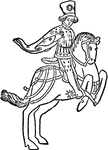
Squire
In feudal or medieval times a squire was a man-at-arms in the service of a knight, often as his apprentice.…
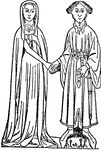
Squire and Wife
An illustration of a squire and his wife. In feudal or medieval times a squire was a man-at-arms in…

Medieval Fold-Tape Fret Band
The Medieval Fold-Tape Fret Band has a meandering pattern that interlaces.

Medieval Enrichment Torus Moulding
The medieval enrichment torus moulding are ribbons the are twisted into net work.

Medieval Enrichment Torus Moulding
The medieval enrichment torus moulding is a 13th century decoration found in an archivolt (underside…

Medieval Steeple Cross
The medieval steeple cross is found in the historic region Franconia of northern Germany.

Medieval Steeple Cross
The medieval steeple cross is found in the historic region Franconia of northern Germany.
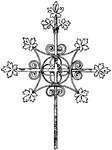
Medieval Steeple Cross
The medieval steeple cross is found in the historic region Franconia of northern Germany.

Medieval Grill Finial
The medieval grill finial is made out of wrought-iron and is in the shape of a flower.
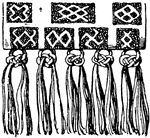
Medieval Maniple Valence
The medieval maniple valence is an embroidered band of silk that is typically worn by priests in the…
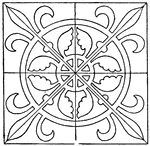
Medieval Square Panel
The Medieval square panel is a tile that is divided into eight equal spaces that are decorated with…
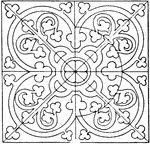
Medieval Square Panel
The Medieval square panel is a tile that is divided into eight equal spaces that are decorated with…
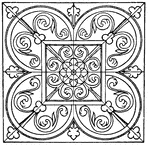
Medieval Square Panel
The Medieval square panel is a tile that is divided into eight equal spaces that are decorated with…
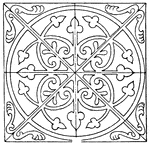
Medieval Square Panel
The Medieval square panel is a tile that is divided into eight equal spaces that are decorated with…

Medieval Circular Panel
The Medieval circular panel is found on a glass-painting in Soissons cathedral in France.

Medieval Folding-Chair
This Medieval Folding-Chair from the 9th or 10th century included a miniature painting of King Nabuchodonosor.
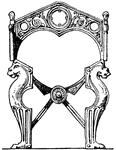
Medieval Folding-Chair
This Medieval Folding-Chair is made of bronze gilt found in the Throne of Dagobert.

Medieval Folding-Chair
This Medieval Folding-Chair dates back to the 12th century, it was made of bronze. Its an Arm-Chair…

